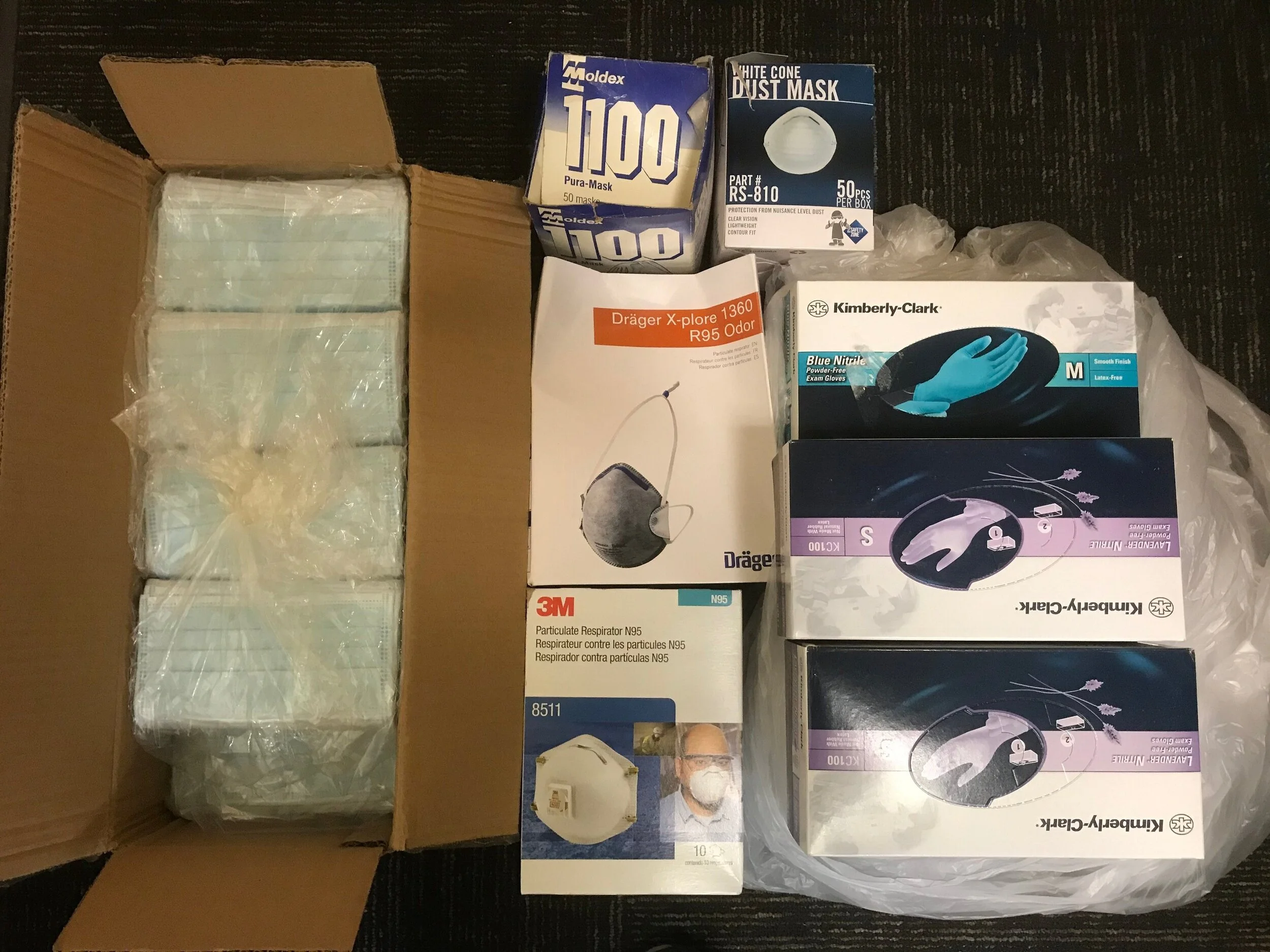UChicago Arts Institutions Repurpose Conservation Supplies for Pandemic
Masks and gloves donated by the UChicago Library, Smart Museum, and Oriental Institute.
By Ellen Wiese
These PPE supplies would normally be used to clean mold spores from medieval manuscripts, protect researchers from particles of preserved skeletons, and reshape galleries to fit new exhibitions of modern art. Today, they’re helping to save lives.
As the COVID-19 pandemic strains the resources of hospitals across the world, Assistant Professor of Medicine Brian Callender received PPE from an unexpected source: the preparation, conservation, and production departments at UChicago arts organizations. With arts facilities closed in response to the pandemic, these institutions were able to repurpose the materials they already had to fill an urgent need.
Patti Gibbons, Head of Collection Management in the Special Collections Research Center for the Library, initially reached out to Callender to see if their supplies would be useful. Once he confirmed that she could donate what the Library had in stock, she reached out to colleagues at on-campus organizations, including the Smart Museum and the Oriental Institute.
The Special Collections Research Center at the Library, the Yelda Khorsabad Court at the OI, and the galleries at the Smart.
In their everyday lives, these supplies are used for a diverse range of purposes: the Library alone uses masks for everything from manuscript conservation to disaster response. Ann Lindsey, Head of Conservation at the UChicago Library, says that masks are most commonly used when conservators are cleaning inactive mold spores from materials. In order to do this responsibly, the library makes its own specialized knives—a process that also requires masks to prevent staff from inhaling wood and metal dust. The Library also keeps PPE on hand in case of bigger problems: disasters in libraries tend to take the form of water damage, so the staff keeps supplies on hand to contend with the possibility of active mold.
The preparation department, registration department, and conservation lab at the Oriental Institute enlist masks and gloves for another set of challenges. When handling objects in the collection—some more than 2,500 years old—nitrile gloves are crucial to preventing the transfer of particles from hands to fragile artifacts. According to Laura D’Alessandro, Head of the Conservation Laboratory, surgical masks come into play not only when working on a dusty or dirty project, but also when working with skeletons and other biological materials. N95 masks are designed to prevent wearers from inhaling very fine particles in the air. Conservators use them when mixing chemicals for conservation treatments that could release potentially toxic particles into the air during the mixing process.
Although the Smart Museum deals less with ancient artifacts and manuscripts and more with acrylics and sculptures, they use N95 masks when working in the woodshop or sanding gallery walls to set up new exhibitions. Staff often build the casework, mounts, and furniture seen in the galleries, and per Exhibition Production Manager Ray Klemchuk, they use the masks the way most tradespeople and fabricators do: for protection against airborne particles like sawdust and drywall dust.
All three organizations emphasized the importance of doing whatever they can to help out in the current moment. As D’Alessandro said, “For us, [the PPE] is non-urgent — it’s sitting there while we’re closed. You’re seeing this all over the country, organizations donating their supplies to the hospitals who really need it right now.”


